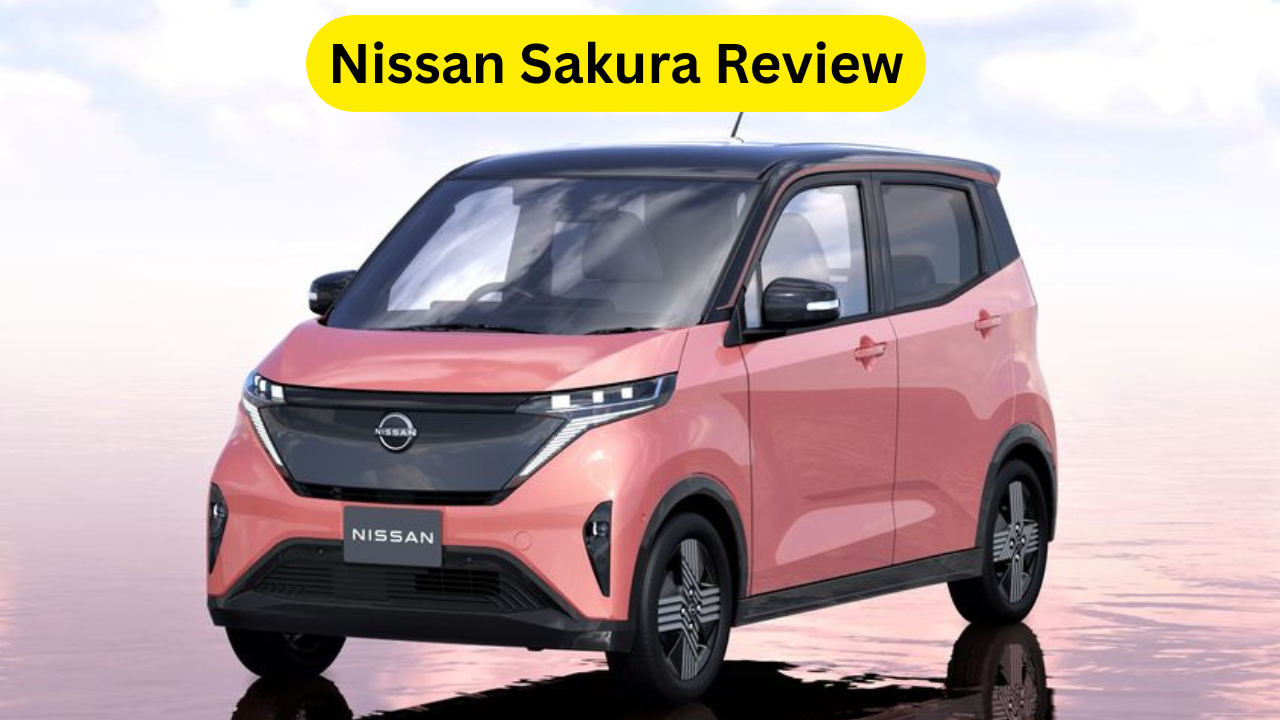Nissan Sakura Review: Imagine a car so small it fits neatly into tight city streets, is incredibly cheap to run, and still manages to charm you with its quirky personality. That’s exactly what the Nissan Sakura brings to the table. This tiny electric vehicle (EV) is Japan’s best-selling EV for a reason. Designed according to the country’s unique kei car regulations, the Sakura is built to be compact, efficient, and affordable. But beyond Japan, it sparks a fascinating debate: is this the kind of car we need for the crowded cities of the future?
While the world rushes to make bigger, faster, and more tech-heavy electric SUVs, Japan is showing us that there’s another path—one that’s smaller, smarter, and far more suitable for dense urban environments. The Nissan Sakura isn’t trying to impress with speed or luxury. Instead, it focuses on practicality and cost-effectiveness. And that might just make it a revolutionary product for other countries that are battling urban congestion and rising fuel costs.
The Sakura also proves that electric vehicles don’t have to be expensive or oversized. It reflects the Japanese philosophy of “less is more,” providing an eco-friendly alternative without pushing buyers into debt. Even Luca de Meo, the CEO of Renault Group, recently suggested Europe should create a kei car-like category. It’s clear that this cute little EV has a much bigger role to play on the world stage—if regulators and carmakers are bold enough to embrace it.
What Is a Kei Car and Why It Matters
Kei cars are a unique category of vehicles in Japan introduced after World War II to support the local auto industry. These cars are tightly regulated in terms of size and engine capacity. According to Japanese law:
- Length cannot exceed 3.4 meters
- Width must be under 1.5 meters
- Height can’t go beyond 2.0 meters
- Petrol engines are capped at 660cc and about 63bhp
- Kei EVs follow similar compact dimensions but with electric drivetrains
Because of their small size, these cars receive special tax breaks, lower insurance costs, and are exempt from the need to own a parking space in some regions—making them extremely attractive for urban dwellers.
Nissan Sakura Highlights
Here’s a quick look at the most important aspects of the Nissan Sakura:
| Category | Details |
|---|---|
| Type | Electric Kei Car |
| Battery | 20 kWh Lithium-ion |
| Range | Up to 180 km (WLTC cycle) |
| Power | 63 bhp (47 kW) |
| Torque | 195 Nm |
| Top Speed | 130 km/h (limited) |
| Charging | AC: ~8 hrs / DC Fast Charging: 40 mins (0-80%) |
| Price (Japan) | Starting from approx. ¥2 million (~₹11 lakh INR) |
| Launch Year | 2022 |
| Seating | 4-Seater |
| Dimensions | 3.39m (L) x 1.47m (W) x 1.65m (H) |
| Drive | Front-Wheel Drive (FWD) |
Performance and Driving Experience
Despite its compact size and modest power, the Nissan Sakura delivers a smooth, quiet, and surprisingly zippy city driving experience. With 195 Nm of instant electric torque, the Sakura feels lively from a standstill—ideal for city stop-and-go traffic. The suspension is tuned for comfort, and the small dimensions make tight turns and parking a breeze.
The range of up to 180 km might not sound like much compared to larger EVs, but for most urban users, that’s more than enough. A full charge typically covers a few days of regular city commuting.
Also read: Audi Q7 Signature Edition: A Premium SUV with Exclusive Add-Ons
Features and Tech
Despite being an affordable kei EV, the Sakura doesn’t skimp on features. It offers:
- 7-inch digital instrument cluster
- 9-inch touchscreen infotainment with navigation
- Apple CarPlay and Android Auto support
- Advanced safety features like automatic emergency braking and lane departure warning
- Regenerative braking with adjustable settings
- Climate control and heated seats in higher trims
It strikes a fine balance between cost-efficiency and convenience, making it feel far more premium than expected at this price.
Design and Interior Comfort
The design of the Nissan Sakura is boxy but charming—almost cartoon-like. It has LED headlamps, sleek panel lines, and dual-tone paint options that give it a youthful and friendly appearance. The compact proportions are used wisely, making it look upright and spacious.
Inside, the Sakura is surprisingly roomy for a kei car. It seats four adults comfortably with good headroom and enough legroom for short trips. The boot space is modest, but practical for daily errands and groceries. The cabin quality is clean and minimal, reflecting Nissan’s smart interior packaging philosophy.

Price and Availability
The Nissan Sakura starts at around ¥2 million in Japan, which translates to roughly ₹11–12 lakh INR. With government subsidies for EVs in Japan, the effective cost can drop to below ¥1.5 million (~₹8.5 lakh) for many buyers.
As of now, the Sakura is only available in Japan. However, growing interest in micro EVs across Asia and Europe could lead to global versions in the future. Nissan has hinted at expanding its compact EV lineup based on the Sakura platform for international markets.
Launch and Future Outlook
The Nissan Sakura was launched in mid-2022, and it quickly became Japan’s best-selling EV. Its popularity signals a larger trend: people are ready for simpler, affordable EVs that solve real-world problems like traffic, pollution, and parking shortages.
With rising fuel prices, urban congestion, and EV mandates, cars like the Sakura could play a pivotal role in shaping the next generation of city mobility—not just in Japan, but globally.
Nissan Sakura Review Conclusion
The Nissan Sakura may look like a novelty, but it offers serious lessons in how to build electric vehicles for modern cities. It’s light, affordable, user-friendly, and built with real-world practicality in mind. For too long, EVs have been targeted at the premium end of the market. The Sakura flips that idea on its head.
If the rest of the world is ready to embrace small, smart, and clean vehicles, then the Nissan Sakura might just be the blueprint. It’s time to think outside the box—and the Sakura is leading the way.
Nissan Sakura Review FAQs
1. What is a kei car and how is it different from regular cars?
Kei cars are a unique Japanese vehicle category regulated by strict size and engine rules to make them affordable and easy to own in urban areas. They are smaller, cheaper, and often enjoy tax benefits, making them a practical choice for city driving.
2. How much does the Nissan Sakura cost in Japan?
The Nissan Sakura starts at approximately ¥2 million (around ₹11 lakh INR). With EV subsidies, the price can drop significantly, making it one of the most affordable electric vehicles in Japan.
3. What is the driving range of the Nissan Sakura on a single charge?
The Nissan Sakura offers a driving range of up to 180 km on a full charge (based on Japan’s WLTC test cycle), which is more than enough for everyday urban commuting.
4. Will the Nissan Sakura be launched in India or other countries?
As of now, the Sakura is exclusive to the Japanese market. However, growing interest in compact EVs around the world may encourage Nissan to adapt the platform for other countries in the future.

